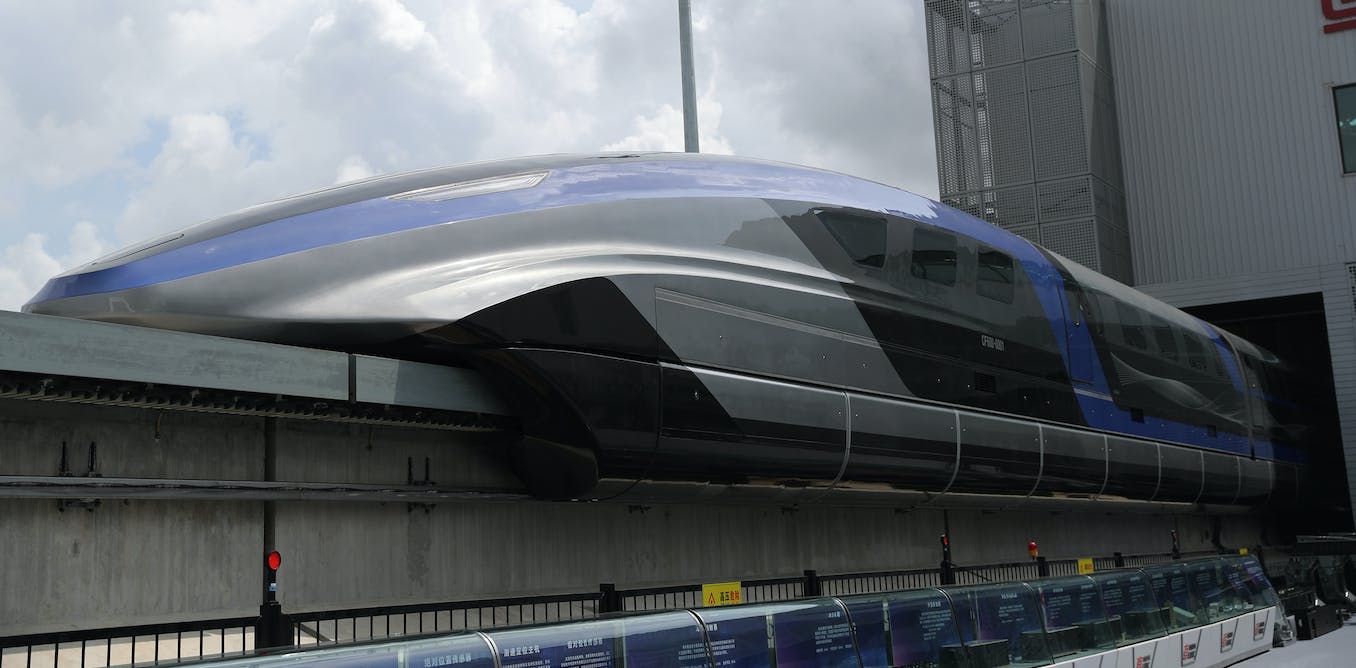Superconductors make highly efficient electronics, but the ultralow temperatures and ultrahigh pressures required to make them work are costly and difficult to implement. Room-temperature superconductors promise to change that.
The recent announcement by researchers at the University of Rochester of a new material that is a superconductor at room temperature, albeit at high pressure, is an exciting development – if proved. If the material or one like it works reliably and can be economically mass-produced, it could revolutionize electronics.
Room-temperature superconducting materials would lead to many new possibilities for practical applications, including ultraefficient electricity grids, ultrafast and energy-efficient computer chips, and ultrapowerful magnets that can be used to levitate trains and control fusion reactors.
A superconductor is a material that conducts direct current without encountering any electrical resistance. Resistance is the property of the material that hinders the flow of electricity. Traditional superconductors must be cooled to extremely low temperatures, close to absolute zero.
In recent decades, researchers have developed so-called high-temperature superconductors, which only have to be chilled to minus-10 degrees Fahrenheit (minus-23 Celsius). Though easier to work with than traditional superconductors, high-temperature superconductors still require special thermal equipment. In addition to cold temperatures, these materials require very high pressure, 1.67 million times more than the atmospheric pressure of 14.6 pounds per square inch (1 bar).
As the name suggests, room-temperature superconductors don’t need special equipment to cool them. They do need to be pressurized, but only to a level that’s about 10,000 times more than atmospheric pressure. This pressure can be achieved by using strong metallic casings.
Where superconductors are used
Superconductor electronics refers to electronic devices and circuits that use superconducting materials to achieve extremely high levels of performance and energy efficiency that are orders of magnitude better than can be achieved with state-of-the-art semiconductor devices and circuits.
The lack of electrical resistance in superconducting material means that they can support high electrical currents without any energy loss due to resistance. This efficiency makes superconductors very attractive for power transmission.
Utility provider Commonwealth Edison installed high-temperature superconducting transmission lines and showcased technologies to bring power to Chicago’s north side for a one-year trial period. Compared to conventional copper wire, the upgraded superconducting wire can carry 200 times the electrical current. But the cost of maintaining the low temperatures and high pressures required for today’s superconductors makes even this efficiency gain impractical in most cases.
Because the resistance of a superconductor is zero, if a current is applied to a superconducting loop, the current will persist forever unless the loop is broken. This phenomenon can be used in various applications to make large permanent magnets.
Today’s magnetic resonance imaging machines use superconductor magnets to achieve the magnetic field strength of a few teslas, which is needed for accurate imaging. For comparison, the Earth’s magnetic field has a strength, or flux density, of about 50 microteslas. The magnetic field produced by the superconducting magnet in a 1.5 tesla MRI machine is 30,000 times stronger than that produced by the Earth.
The scanner uses the superconducting magnet to generate a magnetic field that aligns hydrogen nuclei in a patient’s body. This process combined with radio waves produces images of tissue for an MRI exam. The strength of the magnet directly affects the strength of the MRI signal. A 1.5 tesla MRI machine requires longer scan times to create clear images than a 3.0 tesla machine.
Superconducting materials expel magnetic fields from inside themselves, which makes them powerful electromagnets. These super-magnets have the potential to levitate trains. Superconducting electromagnets generate 8.3 tesla magnetic fields – more than 100,000 times the Earth’s magnetic field. The electromagnets use a current of 11,080 amperes to produce the field, and a superconducting coil allows the high currents to flow without losing any energy. The Yamanashi superconducting Maglev train in Japan levitates 4 inches (10 centimeters) above its guideway and travels at speeds up to 311 mph (500 kph).
Superconducting circuits are also a promising technology for quantum computing because they can be used as qubits. Qubits are the basic units of quantum processors, analogous to but much more powerful than transistors in classical computers. Companies such as D-Wave Systems, Google and IBM have built quantum computers that use superconducting qubits. Though superconducting circuits make good qubits, they pose some technological challenges to making quantum computers with large numbers of qubits. A key issue is the need to keep the qubits at very low temperatures, which requires the use of large cryogenic devices known as dilution refrigerators.
Steve Jurvetson/Flickr, CC BY
Promise of room-temperature superconductors
Room-temperature superconductors would remove many of the challenges associated with the high cost of operating superconductor-based circuits and systems and make it easier to use them in the field.
Room-temperature superconductors would enable ultra high-speed digital interconnects for next-generation computers and low-latency broadband wireless communications. They would also enable high-resolution imaging techniques and emerging sensors for biomedical and security applications, materials and structure analyses, and deep-space radio astrophysics.
Room-temperature superconductors would mean MRIs could become much less expensive to operate because they would not require liquid helium coolant, which is expensive and in short supply. Electrical power grids would be at least 20% more power efficient than today’s grids, resulting in billions of dollars saved per year, according to my estimates. Maglev trains could operate over longer distances at lower costs. Computers would run faster with orders of magnitude lower power consumption. And quantum computers could be built with many more qubits, enabling them to solve problems that are far beyond the reach of today’s most powerful supercomputers.
Whether and how soon this promising future of electronics can be realized depends in part on whether the new room-temperature superconductor material can be verified – and whether it can be economically mass-produced.



